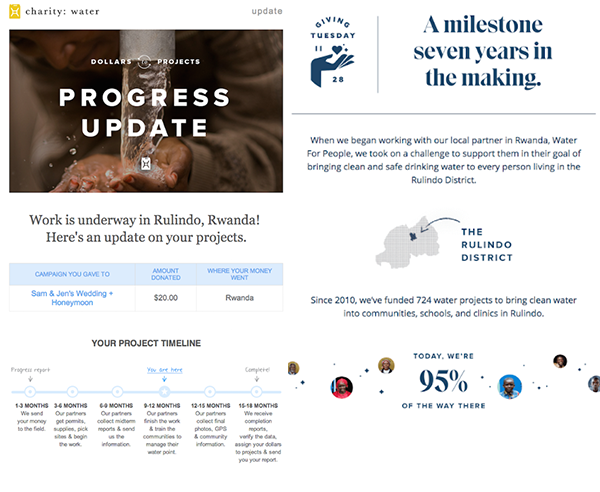How to Stop Buying Lists and Become an Ethical Marketer
These days, marketing is a growing field but even more professionals find themselves in the position of being an accidental marketer: tasked with high-profile PR and communication tasks, but without deep professional experience in marketing.
This is especially common in the nonprofit world, where everyone from Development Directors to Program Management specialists often contribute to email blasts, event invites, and social media plans. I’m proof myself that accidental marketing can become a career: I started my professional life working for AFS-USA in scholarship management, where scholarships often opened doors for the entire organization in branding and outreach.
Whether you’re an accidental marketer or an intentional one, the stakes for marketing have never been higher than they are today. And you owe it to yourself to put some thought into what it means to be an ethical marketer, and how you can embody this no matter what your background.
Why ethical marketing matters today
Increasingly, ethical marketing is not only a matter of being true to your values, but also a matter of liability. The European Union passed GDPR last year, a legal framework that sets guidelines for the collection and processing of personal information for EU citizens, and California has similar legislation hitting the books in 2020. The past decade has been an era of big data and marketers have become used to data being a major asset to their campaigns, but data is now becoming a liability as well.
So how do you move into this new era? Begin by asking yourself some questions.
- Do you buy lists of emails of people who have not consented to hear from you?
- Do you consider others when choosing imagery or crafting language?
- Do you provide easy ways to opt in and out of your communications?
I have three main tips for the ethical marketer.
1. Focus on quality over quantity
This goes for both your email list and your marketing assets such as forms. Let’s start with your list: first of all, if you are still buying lists, stop! Next, have clear steps in practice for removing people who are no longer actively engaged with your content. You can do this through marketing automation tools like Marketing Cloud Account Engagement Studio, or you can start simply by making sure to always check a box in Salesforce when you get an autoresponder that someone has moved on from their company. If you’re using a tool like Salesforce to organize your data you hopefully have less manual data entry work than you used to, so put that time to use maintaining the data you have. At Idealist Consulting, our click rates went up significantly when we committed to reducing our list in the name of quality over quantity.
Next, forms. I recently registered for a free event that required not only first name, last name, company, and title, but also my full work address, cell number (without any explanation why), and company size. Sure, it’s great to have all that data about your constituents, but are you really doing anything with it? If not, consider practices such as progressive profiling to add data gradually in a more consumer-friendly way. And remember that the more form fields you ask for, the fewer conversions you will likely get, so be thoughtful.
2. Insist on opt-in and opt-out transparency
This is nothing new, but when people trust you with their personal information, it is your responsibility to treat it with care. If you ask for an email address or mobile number, say why. I love this example from She Geeks Out, who tells you exactly why they’re asking for your city:
On the other side, make sure all emails you sent have an unsubscribe link. If you use Marketing Cloud Account Engagement (powered by Pardot), you can get really fancy and create a custom email preference center to make sure constituents receive exactly the kind of information they want, nothing more and nothing less.
3. Use your content to be your most authentic self
Finally, the best way to keep constituents engaged with your content and responding to your organization is to be transparent about why you’re talking to them, and how they can stay involved with your organization. Charity Water is a trailblazer in this area. Check out these great examples of how they report back to donors on the impact of their donations:

Since so many of us wear different professional hats, ethical marketing must be a shared responsibility. The people creating content need to work with the folks involved in development who need to collaborate with program management. Everyone at an organization must work together to make sure that not only is the message you’re delivering honest and inclusive, but that the methods you use to deliver content and collect data are transparent.
Want to learn more about how Marketing Cloud Account Engagement can help you be an ethical marketer? Sign up for our newsletter.







